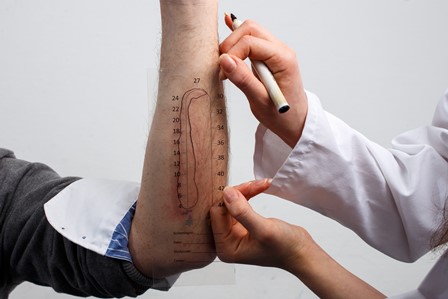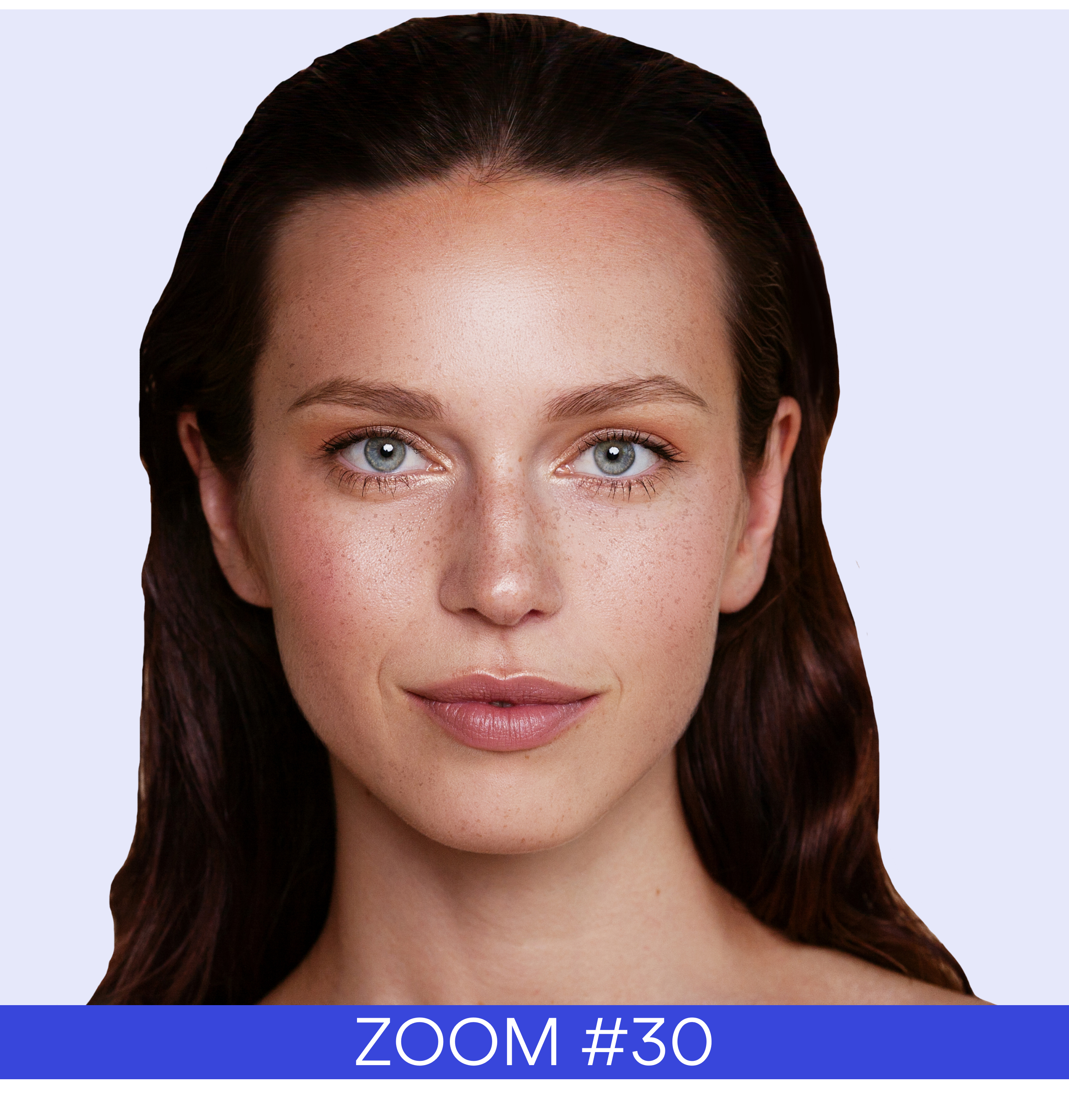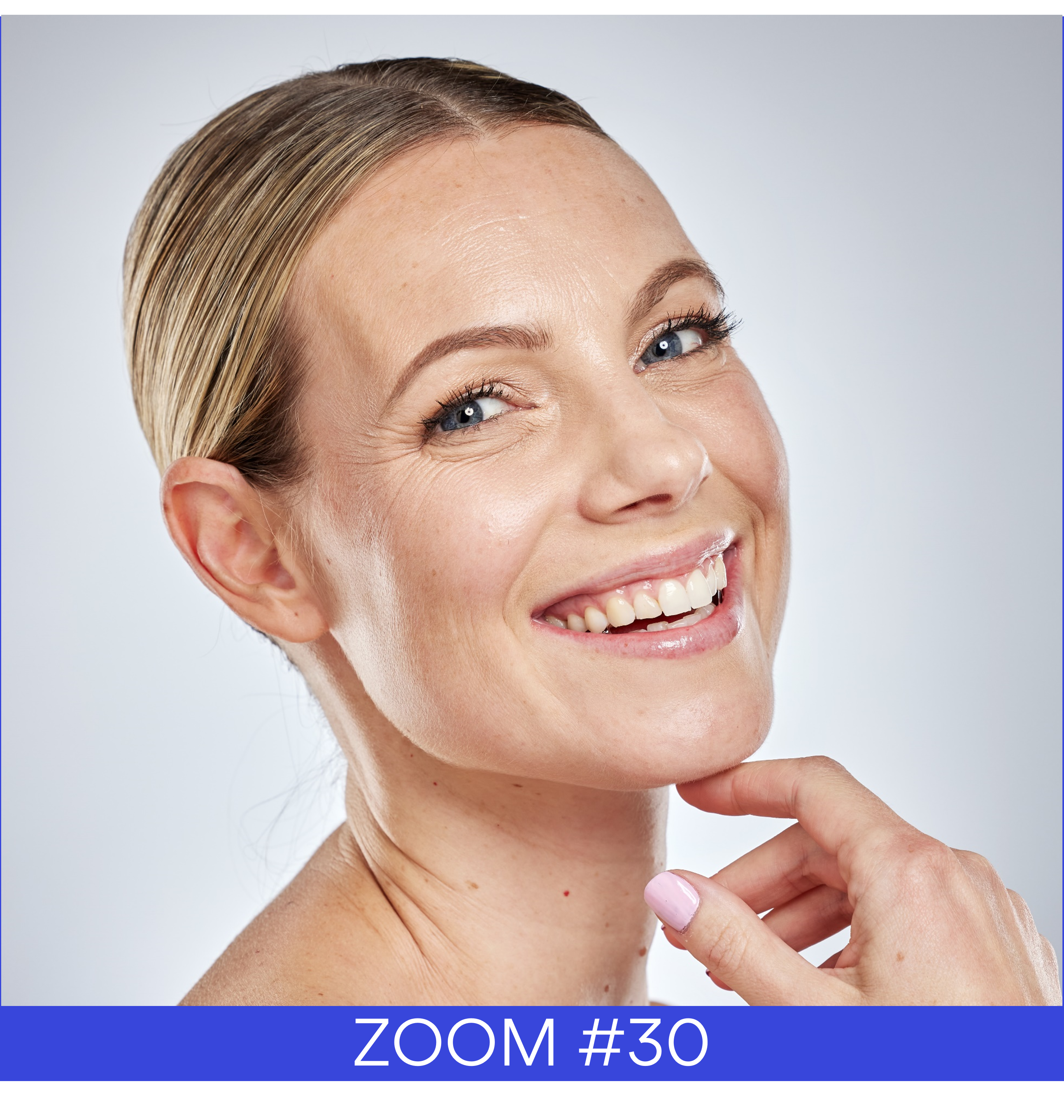By Courage & Khazaka
The device determines if a patient has a cold or heat contact urticaria and at what threshold temperature the symptoms occur. They are both forms of physical urticaria, in which with contact of the skin with temperatures below or above skin temperature, symptoms like itching, burning wheals, etc. will occur. Cold contact urticaria (CCU) however is the more frequent type.
Information about Cold Contact Urticaria (CCU)
Physical urticaria as the CCU are characterized by wheal reactions paired with itch and burn and/or angioedema following exposure to a specific, exogenous, physical stimulus, in this case cold. It is classified as a pseudo-allergic reaction and quite widely-spread (especially in colder climate countries – in Germany approx. 400.000 patients). Also women seem to be more concerned than men.
Trigger examples from every-day life:
- Cold drinks or ice cream
- Getting in contact with a cold surface (e.g. putting the arms on a metal table)
- Swimming
- The evaporative cold after sweating
- Being outdoors in cold temperature

- and many more …
Whereas most encounters lead to extremely uncomfortable but rather harmless symptoms, in individual cases the consequences are much more severe (examples):
- Eating something cold (e.g. ice cube) may cause pharyngeal swelling leading up to asphyxiation.
- A jump into cold water may cause an anaphylactic shock leading to unconsciousness or drowning.
- Infusions not warmed to body temperature may lead to extreme histamine distribution. An anesthesiologist has to be informed about a CCU prior to the anesthesia.
How does the TempTest® work?


The device has been developed by Germany’s first medical university, the Charité in Berlin (Prof. Marcus Maurer).With TempTest® the described urticaria cannot only be determined but also the exact temperature triggering it for this person can be stated.
There is no general threshold temperature for the patients. It differs individually.
The TempTest® produces temperatures of 4°- 44° C. which are applied to the skin. The patient places the inner forearm on an aluminum stencil on the device for 5 minutes. The stencil shows the temperature range continuously. With this procedure it is determined at which threshold temperature (highest temperature for cold- and lowest temperature for heat urticaria) wheals are triggered.
After 10 more minutes, the wheals on the skin are compared to the foil stencil and the threshold temperature is determined conveniently. The wheals can be marked on the foil and it can be saved in the patient file for medical documentation.
Advantages of the TempTest®
Once the patient knows the individual threshold temperature for the CCU, symptoms can be avoided as far as possible:
- by appropriate behavior (e.g. avoid special food, drinks, extreme sweating or specific sports)
- by wearing protective clothes whenever it is below the threshold temperature
- by using skin protection products
- by informing other doctors before any possible treatment so that no risk can occur

Further Advantages:
- The TempTest® is extremely easy and quick to handle.
- It is a class IIa medical product.
- There are already several publications and presentations stating the benefits and usefulness of the device*
- The device can be used on adult and pediatric patients.
- Unwanted side effects are very uncommon. If the test is positive and wheals form, they may last some minutes up to hours, including in some cases itching and/or burning. However, they regress after several hours without lasting consequences.
Example: *Causes, Triggers and Mechanisms of Physical Urticaria – Insights from Cold-Contact Urticaria, Krause, Ardelean et al., Adv Psor Inflamm Skin Dis 2010;1(3):99–104.









 Follow us on Linkedin!
Follow us on Linkedin!